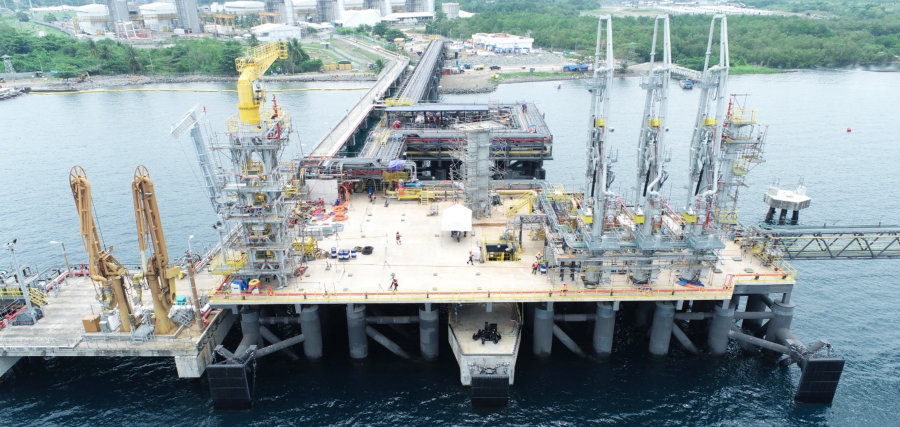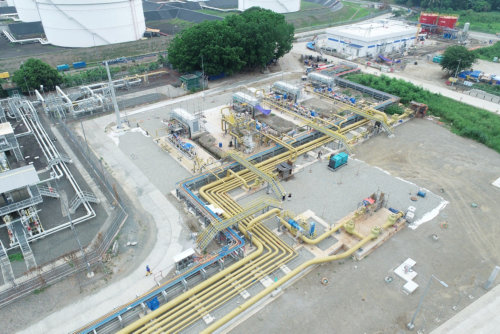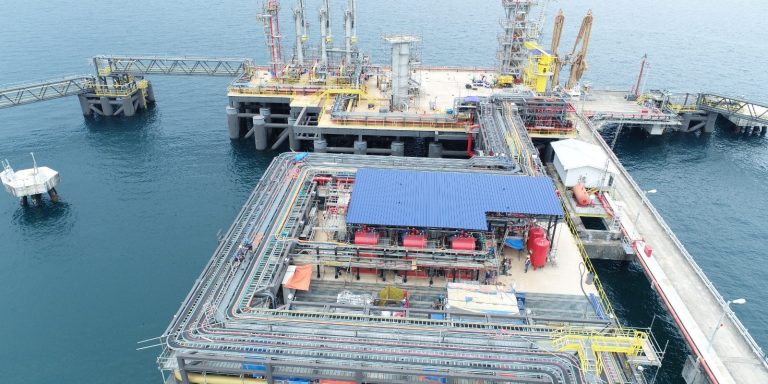Engineering energy continuity on shifting ground
Faced with seismic terrain, liquefiable soils, and a depleting gas supply, we helped deliver critical infrastructure to enable flexible LNG imports for one of the country’s key energy hubs.
This LNG Terminal represents a key step towards strengthening energy security in the Philippines. With the country’s primary gas source in decline, a new facility was needed, capable of importing LNG via a moored Floating Storage Regasification Unit (FSRU), while also maintaining compatibility with legacy supply infrastructure.

*
Verbrec was engaged under an EPC arrangement to provide full engineering design services, integrating complex systems across marine and land-based environments, while navigating one of the most seismically active regions in Southeast Asia.
Seismic Resilient Design
Flexible high-pressure piping engineered.
Grid-Compliant Power Systems
HV, MV, and LV electrical
distribution designed.
Dual Gas Source Capability
System configured for seamless gas delivery.
Integrated Control & Safety Systems
Fire protection, shutdown, regulation, and custody metering incorporated.
Designing for Dual Supply and Flexible Operation
The terminal was required to support two distinct gas supply sources: the ageing domestic field and the new LNG import capability. Verbrec’s scope included:
- Process and mechanical systems.
- Offshore wharf infrastructure and interface.
- High-pressure gas loading arms.
- Wharf and land-based piping and pipeline networks.
- Seawater and freshwater fire systems.
- Gas metering, regulation, control, and emergency safety shutdown systems
Earthing and lightning protection systems.

*
This flexible setup ensures stable delivery to four adjacent power plants, supporting today’s operations while adapting to tomorrow’s energy mix.
Seismic Intelligence Built In
The terminal’s coastal location lies in a high seismic hazard zone, underlain by liquefiable soils. Verbrec’s engineers developed flexible piping systems designed to absorb differential movement between piled structures and shifting ground. This approach mitigated risk and ensured long-term durability, addressing one of the most critical safety challenges of the project.

*
Powering the Terminal and Protecting the Grid
Verbrec designed the entire electrical power system for the terminal, spanning HV, MV, and LV distribution for offshore and onshore facilities. All components were developed to national safety standards and to interface seamlessly with the Philippine grid, ensuring fault-tolerant operation and secure integration of this vital energy infrastructure.
Built with Practical Precision
By working closely with the marine and structural design teams, Verbrec resolved key interface challenges early, translating complex design intent into real-world construction outcomes. Every system was engineered not just for performance, but for buildability under real project conditions.
Strengthening Energy Reliability:
Today and Tomorrow
Through collaborative engineering, seismic resilience, and system flexibility, this LNG terminal now plays a vital role in ensuring energy continuity for the Philippines. Verbrec’s practical, future-facing designs helped ensure this asset is ready to meet the country’s evolving needs, regardless of shifting ground beneath it.